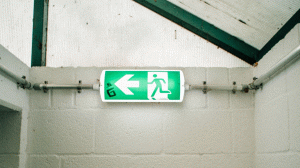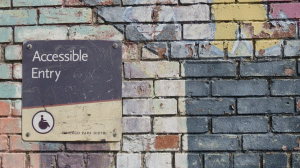In order to meet today's environmental challenges, Cradle to Cradle has created three principles for creating a positive footprint. How can we all act in accordance with these principles? Nora Sophie Griefahn, co-founder of the Cradle to Cradle Association in Berlin, explains the idea behind their work.
Our concept, or what we strive for, is built on two pillars: the Cradle to Cradle (C2C) school of thought and the C2C design concept.The C2C school of thought sees mankind as a beneficial organism that is a part of nature: we live in it, interact with it, and, as living beings, belong to it.
We do not see ourselves as superior to nature but rather as a partner of nature. This partnership comes with an obligation to share but simultaneously gives us the right to exist and act. Current environmental debates focus on humankind’s efforts to restrict its actions, on reduction, abstention, and our negative environmental footprint. But why settle for being less bad when we could also be good? Let's move towards a positive footprint!
According to the Cradle to Cradle school of thought, we can be a beneficial part of nature. Not only does this kind of self-perception break with old patterns of thinking, it can also encourage us.
The C2C school of thought does not aim to improve existing frameworks; instead, it actively looks for entirely new ways: products and services are being re-imagined from start to (re-)start – from cradle to cradle.
Here, our design concept comes into play, which consists of three principles that are based on natural systems and their inherent intelligence.
First Principle:
The first principle, “waste equals food,” makes sure that all used materials can perpetually circulate in cycles. According to this principle, waste does not exist! In contrast to conventional recycling, the quality of the materials never decreases during their re-utilization. They become and remain food for new products.
How is that possible? We define usage scenarios for the bio- or technosphere. Depending on which sphere they belong to, products have different usage scenarios and are subject to different requirements – both of which determine the materials a product is made from.
The biosphere encompasses biological cycles, namely consumables that are in direct contact with the environment – for example, through abrasion.

Biosphere Cycle, C2C, Christian Buchner
A product belonging to biological cycles must be entirely made of biodegradable materials, which will eventually serve as biological nutrients. Cleaning products and detergents, for example, which will definitely enter the biosphere, are designed with healthy chemicals; as a result, the substances reentering the environment are harmless for both people and nature. Another example is car tires. They are exposed to constant abrasion which generates particles of microplastic. Hence, tires should be designed so that the particles entering the environment do not pose a threat.
Besides the biological cycle, there is the technological cycle, which focuses on the primary resources included in a produced good.

Technological Cycle, C2C, Christian Buchner
Office chairs, for example, can be produced in such a way that all used materials can eventually be fully disassembled and replaced. This way, all materials used in the production are preserved and reused.
Second Principle:
The second principle states that we use renewable energies for the manufacturing of intelligent, recyclable, and innovative products.
Sun, wind, and water are the driving forces behind all natural processes. Clean energy allows emission-free manufacturing processes and will remain a dependable source of energy for many future generations. Solar panels, for instance, are not only an efficient way of powering factories; they can also be implemented on a smaller scale – for example, to make households energy self-sufficient or charge e-cars.
Third Principle:
The third principle is: Keep diversity alive! In nature, plurality is such a huge advantage. Nature has shown us that diverse eco-systems are often more resilient and more flexible. Standardization, which is one of the central hallmarks of the industrial revolution, is often a dead end.
The C2C design concept calls for the integration of a variety of ideas, concepts, opinions, habits, and cultures. To put it differently, this concept challenges the “one-size-fits-all” attitude, implying a universal lifestyle.
A good example is traditional ways of life where people around the globe have adapted to and taken advantage of local conditions. The appreciation of local resources, crops, and materials not only saves resources and maintains healthy natural systems. This concept argues that a factory in the desert should be constructed differently than a factory in the tropics. How can we include the local environment? Architecture, for instance, should consider local conditions like, for example, the use of geothermal energy in Iceland.
So there you have it. This is how we can reimagine a product lifecycle from start to (re-)start – from cradle to cradle. Why settle for being less bad when we could also be good? Let‘s move towards a positive footprint!
This article is presented in collaboration with TwentyThirty.
TwentyThirty is an online magazine presented by the BMW Foundation Herbert Quandt. It sheds light on the social, political, and environmental challenges we face and features inspiring Responsible Leaders who are working to solve them. Follow their work on Facebook.










